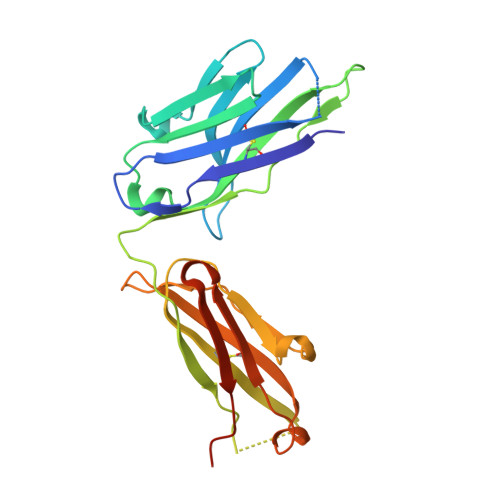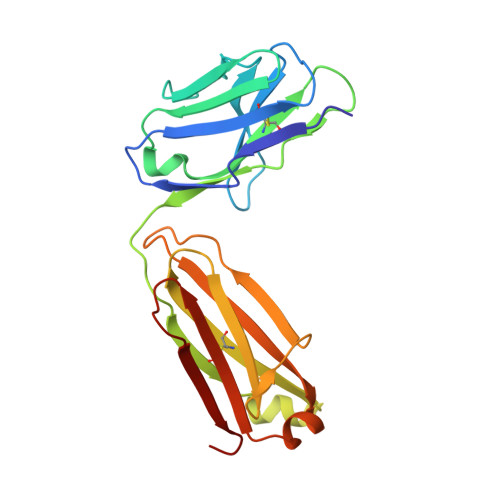Preclinical Characterization of Relatlimab, a Human LAG-3-Blocking Antibody, Alone or in Combination with Nivolumab.
Thudium, K., Selby, M., Zorn, J.A., Rak, G., Wang, X.T., Bunch, R.T., Hogan, J.M., Strop, P., Korman, A.J.(2022) Cancer Immunol Res 10: 1175-1189
- PubMed: 35981087
- DOI: https://doi.org/10.1158/2326-6066.CIR-22-0057
- Primary Citation of Related Structures:
7UM3 - PubMed Abstract:
Novel therapeutic approaches combining immune-checkpoint inhibitors are needed to improve clinical outcomes for patients with cancer. Lymphocyte-activation gene 3 (LAG-3) is an immune-checkpoint molecule that inhibits T-cell activity and antitumor immune responses, acting through an independent mechanism from that of programmed death-1 (PD-1) and cytotoxic T-lymphocyte-associated antigen-4 (CTLA-4). Here, we describe the development and preclinical characterization of relatlimab, a human antibody that binds to human LAG-3 with high affinity and specificity to block the interaction of LAG-3 with the ligands MHC II and fibrinogen-like protein-1, and to reverse LAG-3-mediated inhibition of T-cell function in vitro. Consistent with previous reports, in mouse models, the combined blockade of LAG-3 and PD-1 with surrogate antibodies resulted in enhanced antitumor activity greater than the individual blockade of either receptor. In toxicity studies in cynomolgus monkeys, relatlimab was generally well tolerated when combined with nivolumab. These results are consistent with findings from the RELATIVITY-047 phase II/III trial showing that relatlimab combined with nivolumab is a well-tolerated regimen that demonstrates superior progression-free survival compared with nivolumab monotherapy in patients with unresectable or metastatic melanoma.
- Bristol Myers Squibb, Princeton, New Jersey.
Organizational Affiliation:


















